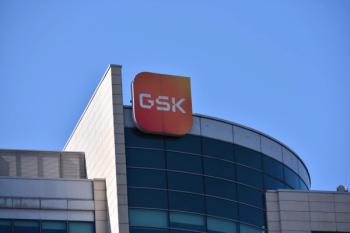
- BioPharm International-09-01-2016
- Volume 29
- Issue 9
Innovation vs. Capacity: How CMOs Compete
The strategies of a innovation-driven CMO may be different than a capacity-driven CMO.
While industry participants and observers talk about the “CMO industry,” they know that it is not an undifferentiated mass of manufacturers. The contract and manufacturing organization (CMO) industry can be segmented along obvious lines such as API versus drug product manufacturers, biologics versus small molecule, dose form(s) manufactured, and geographic focus. But none of these designations reflect the strategies that each CMO is pursuing, and without that basic understanding, one cannot fully understand the prospects for the industry.
In PharmSource’s update of the drug product manufacturing industry’s size and structure (1), the CMO industry was parsed into two strategic segments: innovation-driven CMOs and capacity-driven CMOs.
Innovation-driven CMOs target higher-value market opportunities including new molecular entities and improved dose forms and formulations of older drugs. Innovation-driven CMOs are distinguished by several key characteristics and capabilities:
- Business strategy based on achieving high margins by providing capabilities that support higher-priced novel products
- A significant number of new drug application (NDA)/biologic license application (BLA) approvals during the past 10 years, including both new molecular entities and new dosage forms
- Strong pharmaceutics capabilities to support development and manufacture of novel drugs and formulations
- Strong regulatory and quality assurance (QA) capabilities that support dependable registration and approval of new drugs at FDA and the European Medicines Agency (EMA)
- Capabilities to support clients on a global scale, especially clients in North America, Europe, and Japan.
Capacity-driven CMOs are focused on filling largely undifferentiated manufacturing capacity primarily by producing generics, undifferentiated over-the-counter (OTC) medications, and late lifecycle branded products. Characteristics of capacity-driven CMOs include:
- Business strategy based on acquiring and/or maintaining capacity for routine manufacturing processes such as direct compression solid dose presentations and injectables packaged in ampules
- Tendency to acquire redundant facilities from bio/pharma companies at relatively low cost and with contracts for legacy products
- Few approvals for NDA/BLAs or new active substances (NAS)
- Focus on regional, national, or local markets with limited experience with major regulatory regimes (FDA, EMA, Japanese Pharmaceuticals and Medical Devices Agency [PMDA]) outside of their home region
- In many cases, entry into CMO business solely to sell excess capacity in facilities manufacturing proprietary products.
PharmSource considers only 25 (9%) of the 280 CMOs in the CMO industry to be innovation-focused, but they account for one-third of the dose CMO industry’s revenues. The PharmSource categorization of CMO segments is a function of strategy and track record rather than size. Consider the differences in the top six drug-product CMOs by revenue:
- Famar, Fareva, and Aenova collectively account for more than 10% of total CMO revenue, but between them received only a single new molecular entity (NME) approval in the 2006-2015 period out of 130 outsourced NME approvals, and only 12 NDA/BLA approvals out of 445 outsourced NDA/BLA approvals.
- By contrast, the three other members of the largest CMO list, Patheon, Catalent, and Vetter, accounted for 18% of industry revenues and 33% of outsourced NDA/BLA approvals.
Clearly these two groups of companies are addressing different customers and pursuing different strategies. Those strategies are important because individual CMOs cannot depend on general organic market growth alone to propel their own revenue and profitability growth. Having well-thought-out strategies that target more attractive market segments, align capabilities to serve those segments, and capture market share are more crucial than ever for achieving healthy returns and meeting investor expectations.
Capacity-driven CMO outlook
The challenges are particularly intense for capacity-driven CMOs, which are dependent on older, often undifferentiated products including generics and branded products in the late phases of their lifecycle. Capacity-driven CMOs face several significant difficulties, notably too much capacity relative to market size and declining prices.
In Europe, in particular, government efforts to hold the line on healthcare costs have triggered a move away from branded generics to commodity generics that are procured by government tenders. Tendering not only lowers prices, it results in CMOs losing unit volumes when their clients lose tenders. Several CMOs have reported revenue declines resulting from lost tenders in recent years. There is a similar process going on in Japan.
There are two areas where capacity-driven CMOs have promising opportunities. One is generic injectables, where product shortages owing to capacity exits and compliance problems at both domestic and offshore suppliers continue to plague the market. The other promising area, in North America at least, is generic semisolid topical products, for which sharp price increases have drawn competitors to the market; however, most generic-drug companies lack formulation capability or manufacturing capacity for semisolids.
Innovation-driven CMO outlook
Innovation-driven CMOs are focused on developing, manufacturing, and supporting truly new products, including NMEs and novel formulations of older products. Innovation-driven strategies should produce faster growth and better profit margins than the strategies pursued by capacity-driven CMOs. The key to their success is a combination of technical expertise, operational dependability, and regulatory savvy that ensures a new product application will navigate the approval process in multiple jurisdictions with few problems.
The current bio/pharma industry environment is a positive one for the innovation-driven CMOs. New product approvals have surged in recent years, while the convergence of new technologies and a generous financing environment has swelled the pipeline of new product candidates and seemingly assures a continued flow of new opportunities and approvals.
Nevertheless, innovation-driven CMOs face some significant challenges. Perhaps the biggest is the reduced propensity of global bio/pharma companies to outsource manufacture of their newest products, especially biopharmaceuticals. New product approvals earned by global bio/pharma companies (i.e., the 25 largest companies by revenues) have more than doubled in recent years, thanks in part to in-licensing and acquisition of candidates from smaller companies. At the same time, they have substantially increased their investment in new in-house manufacturing facilities, especially for biopharmaceuticals. That combination of a greater share of approvals and reduced propensity to outsource creates a significant headwind for innovation-driven CMOs.
CMOs are also contending with smaller unit volumes per product as new drugs are better targeted than previous generations. To some degree, the smaller volumes will be offset by higher unit prices reflecting more complex processing requirements as well as smaller batch sizes, but CMOs may need more products to generate a given volume of new growth.
Performance as a barrier
The segmentation between innovation-driven and capacity-driven CMOs is not hard and fast; innovation-driven CMOs, in particular, have the ability to pursue the kind of opportunities that capacity-driven CMOs would typically target, although their higher cost structure will reduce the profitability of those deals. Capacity-driven CMOs, however, are much more constrained in their strategic options, in particular by their meager track records of NDA and NME approvals. For a company bringing an innovative product to market, the risk of working with a CMO that has gained only one or two NDA approvals in a 10-year period is great relative to working with a CMO that gets two-to-five NDA approvals annually. Track record is a huge barrier that protects innovation-driven CMOs from their capacity-driven competitors, and the height of that barrier will only increase over time.
Reference
1. PharmSource, Contract Dose Manufacturing Industry by the Numbers: Composition, Size, Market Share and Outlook-2016 Edition (PharmSource, 2016).
Article Details
BioPharm International
Vol. 29, No. 9
September 2016
Pages: 12-13
Citation
When referring to this article, please cite it as J. Miller, "Efforts Accelerate to Streamline Postapproval Change Process," BioPharm International 29 (9) 2016.
Articles in this issue
over 9 years ago
Parenteral Advisory: Outmoded Fill/Finish Technologyover 9 years ago
Analyzer Automates Cell-Culture Chemistry Analysisover 9 years ago
Data Logger Provides Ultra-Low Temperature Readingsover 9 years ago
Manufacturing and Distribution Boundaries Blurover 9 years ago
Modeling Bioreactor Performanceover 9 years ago
Implementing a Dual Approach to Protein Characterizationover 9 years ago
Efforts Accelerate to Streamline Postapproval Change ProcessNewsletter
Stay at the forefront of biopharmaceutical innovation—subscribe to BioPharm International for expert insights on drug development, manufacturing, compliance, and more.




